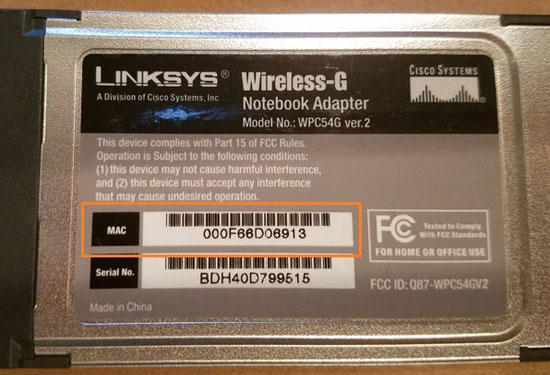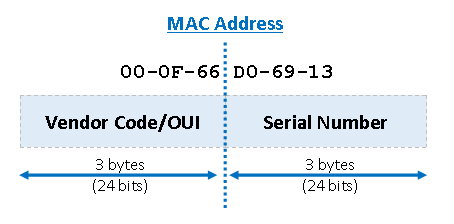Instructions/Notes
Find the vendor of your network devices. This tool looks up the name of the company that manufactured your network device/card by matching the MAC address (OUI) with our database. Enter a MAC address (00:11:22:33:44:55 or 00-11-22-33-44-55) below. OUIs and MAC octets may be separated with either colons, hyphens or space. You can also use this tool to list the OUIs assigned to a particular manufacturer.
Need a random set of MAC addresses for testing or research? Try our Random MAC Address Generator.
Click to learn more about MAC Address & OUI
Every device that communicates on a network is assigned a unique 6-byte (48-bit) Media Access Control (MAC) address by the manufacturer. This address, also called a hardware address or physical address, is baked onto the ROM firmware (sometimes referred to as the burned in address) of the network card, router, firewall, network switch, wireless access point, and other networking devices manufactured.
Manufacturers are all assigned a unique set of 3-byte codes called the Organizationally Unique Identifier (OUI). The 3-byte code (sometimes referred to as a vendor code) becomes the first three bytes (aka octets) of the 6-byte MAC address. The last three bytes is a unique value that the manufacturers assigns themselves (e.g., the serial number). No two network devices/cards in the world should have the same MAC address. If there happens to be two network devices/cards with the same 6-byte MAC address and they happen to be on the same network, reliable network communication cannot take place.

Where to Find Your MAC Address
MAC address for your network device can be found printed a label of your devices. Sometimes it can be etched onto the circuit board (eg., network cards). Alternatively, you can also find the MAC address of your computer by using the Ipconfig command-line tool.MAC Address Example
00-0F-66-D0-69-13 (can also be written as 000F.66D0.7654 or as 00:0F:66:D0:69:13)
In this example, the first 3-byte code (00-0F-66) is the OUI and identifies Linksys/Cisco as the manufacturer. The last three-byte code (D0:69:13) identifies the unique unit Linksys/Cisco manufactured.
With this arrangement, MAC address will uniquely identify a specific network device/card in the world. The first three bytes identifies the manufacturer and the last three bytes identifies the specific device unit and potentially identify the customer it is registered with.

